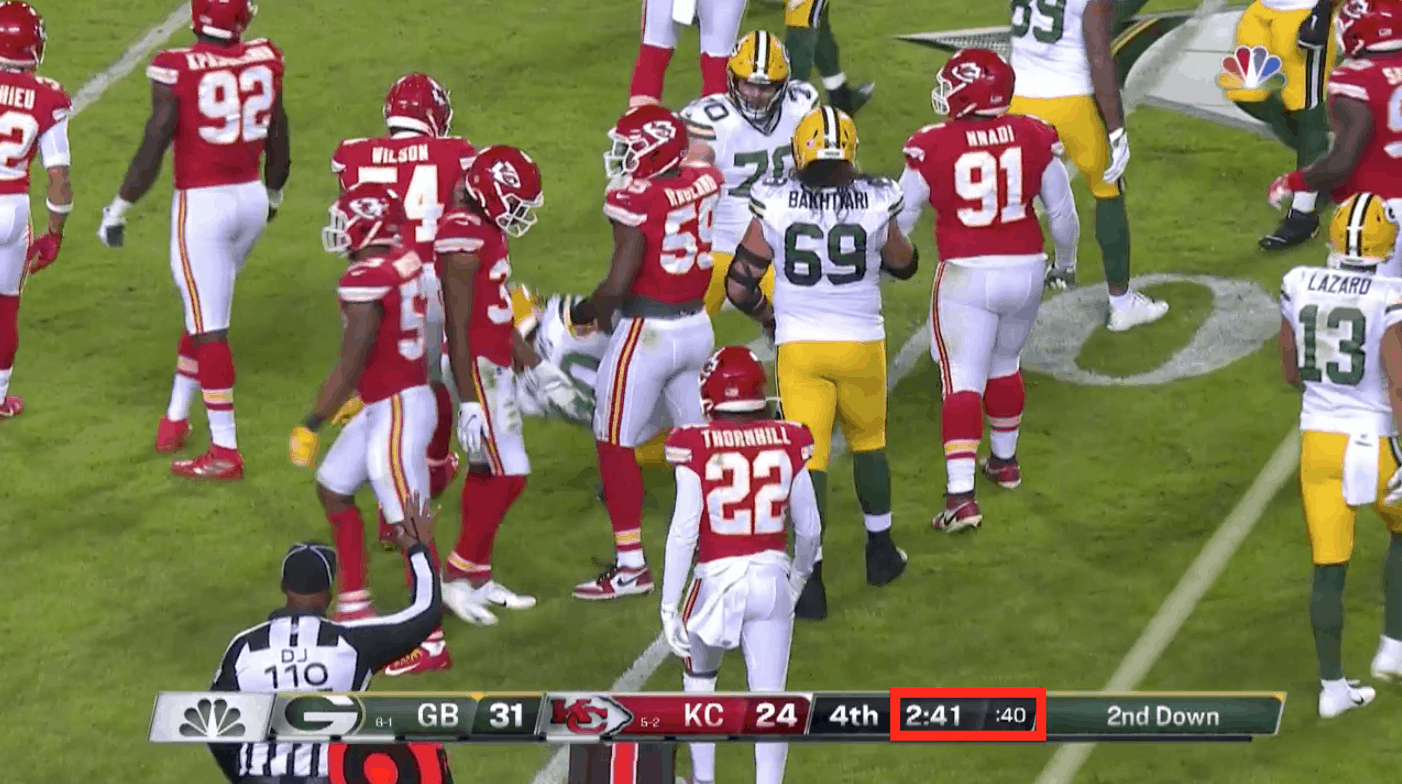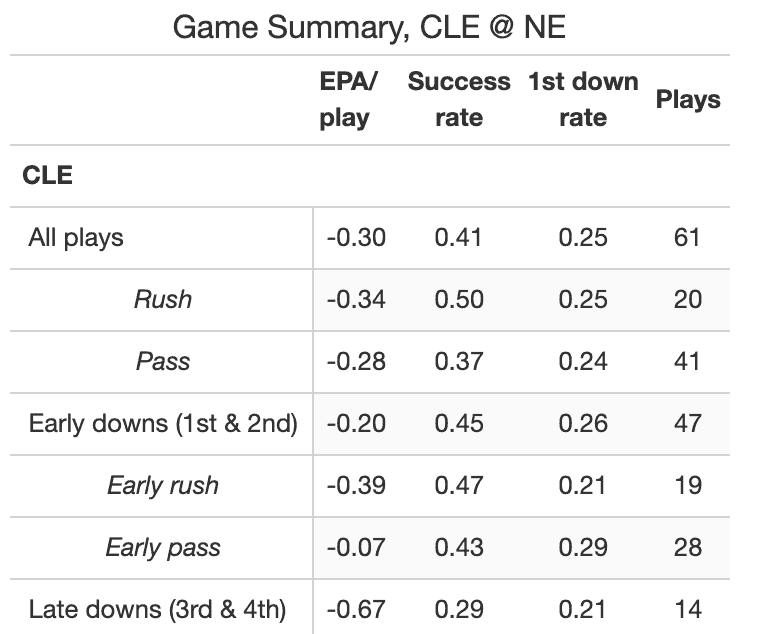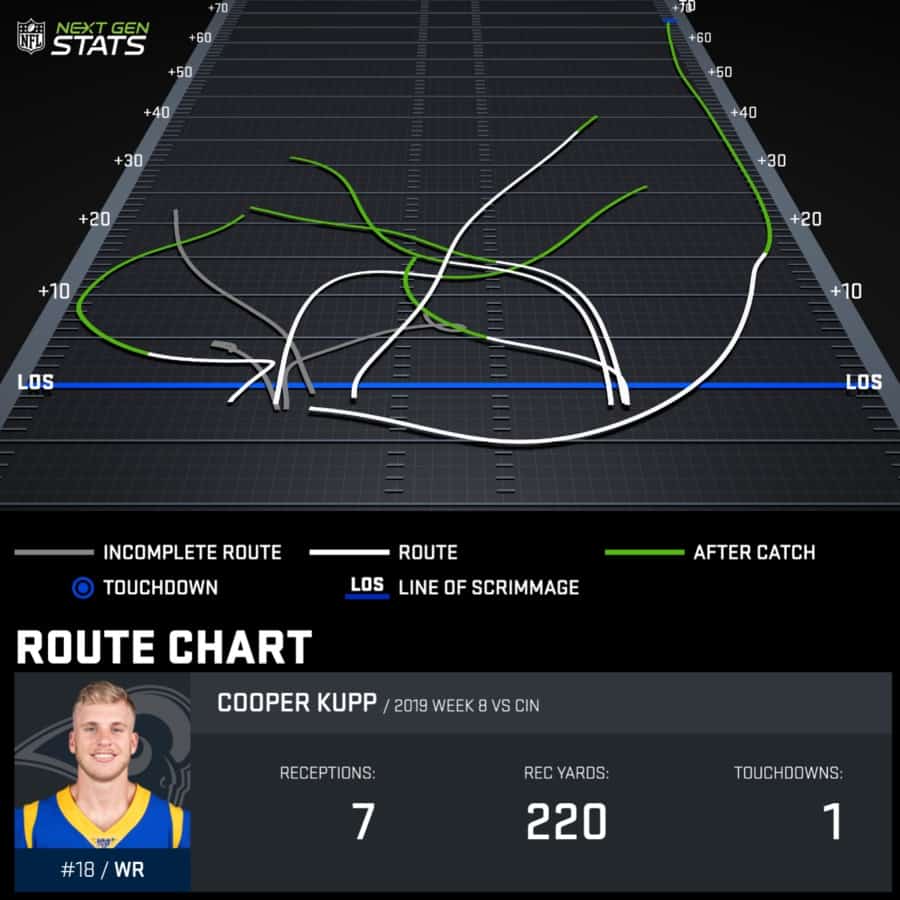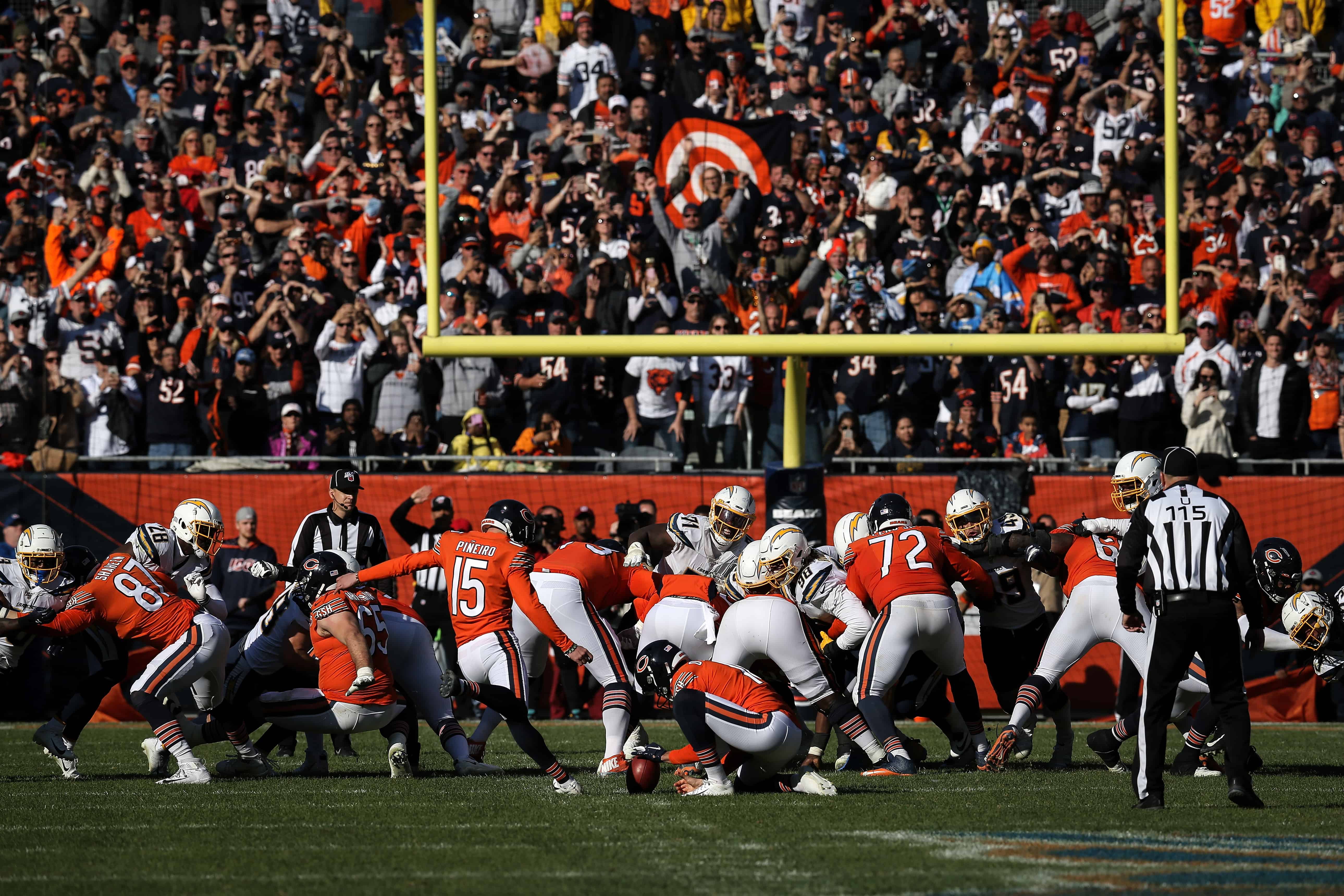Week 8 didn’t look particularly exciting on paper. But it gave us just enough close games, a few surprising blowouts, and our last look at these teams before the trade deadline. There were a few trends that opposed up on Sunday, but none more puzzling than what happened to those who walk the sideline.
1. Coaching Challenges
With more information available and more head coaches willing to listen to that information, we’ve gotten better fourth down decisions and better all-around process in game management. Week 8 might have erased all of that. There were a number of questionable coaching decisions across the league — enough that this entire column could have just gone over 10 of them. But we won’t do that. Instead, we can just take a look at a few of the most impactful.
The Bears kneel to set up game-winning field goal attempt
No one in Chicago feels good about putting a game on the leg of a kicker. The Bears spent the entire season obsessed with a missed 39-yard field goal in the playoffs instead of focusing on an offense that couldn’t score points. But the Bears were content enough to let Eddie Pineiro attempt a 41-yard field goal to win the game against the Los Angeles Chargers. Down 17-16, Chicago got the ball to the 21-yard line after a scramble from Mitchell Trubisky. With 43 seconds and a timeout remaining, the Bears called for a kneel instead of a shot to gain more yards for an easier field goal. They called timeout, sent the kicker on, and he missed.
After the game, Matt Nagy told reporters he had no thoughts of running a play instead of the kneel. He was even perplexed when someone suggested a pass in that situation. His response? “What if we throw an interception or fumble?” If you want to know what Nagy currently thinks of his quarterback, that says it all and it cost the Bears a win.
Frank Reich goes conservative
We can’t call out Nagy’s misfire if we don’t also call out a similar process, even if it worked. The Indianapolis Colts found themselves in a similar situation at the end of their game against the Denver Broncos. The Colts trailed 13-12 with 1:13 remaining. They faced a 2nd and 11 from the Denver 35-yard line. Frank Reich then called two straight runs, which gained two and zero yards. It set up a 51-yard field goal attempt for Adam Vinatieri, who had already missed a field goal and extra point in the game.
Vinatieri made the kick, but the conservative play-calling from Reich, who has been one of the more aggressive head coaches in the league was a disappointing development and just as easily could have cost his team a win.
Denver punts in plus territory
Indianapolis only had a chance to win the game because Denver punted on the previous drive. The Broncos faced a 4th and 5 from the Colts’ 43-yard line with 1:48 remaining and the Colts out of timeouts. The decision to punt cost the Broncos 2.9% pre-snap win probability, per EdjSports. A conversion there seals the game, but instead, the Broncos gave the Colts the ball back. Denver’s punt even angered Joe Flacco, who made a rare passionate case to reporters after the game about how the then-2-5 Broncos had nothing to lose by going for it.
Here’s Joe Flacco’s full quote on the lack of aggressiveness today. pic.twitter.com/sVuFZzFymm
— Ryan Koenigsberg (@RyanKoenigsberg) October 27, 2019
While Flacco has a point, he might not be the best messenger for preaching aggressiveness. Per Next Gen Stats, Flacco’s 5.5 average depth of target was the fifth-lowest of all quarterbacks in Week 8 and his 3.3-yard average depth of completion was the lowest. No quarterback on Sunday had an average pass that went further behind the sticks. Flacco is part of the aggressiveness problem, not the solution.
The Browns Did… Something
So false start in 4th & 11, with punt unit, Freddie pulls them puts offense out for 4th & 16. Baker sacked. Nathan Zegura just reported, #Browns deliberately false started so the offense could return to the field because Kitchens didn’t want to burn final timeout. Clown show.
— Daryl Ruiter (@RuiterWrongFAN) October 27, 2019
There’s so much to unpack here, so let’s try to summarize. Cleveland faced a 4th and 11 after an overthrown deep pass from Baker Mayfield to Odell Beckham. With the clock stopped, Freddie Kitchens sent on the punt team. Then somewhere along the way, Kitchens decided he wanted to go for it — down 27-10 with 6:07 left in the game — and instead of using his final timeout, told a gunner to intentionally false start so the offense could go back out on the field for a 4th and 16.
Cleveland was only down to one timeout because Kitchens lost a challenge earlier in the fourth quarter — an offensive pass interference call on Antonio Callaway.
Between the egregiousness of the actual foul and the low probability of pass interference challenges getting overturned, there was virtually no chance of that challenge being successful. Just disastrous game management along every step to lead up to the intentional false start.
Andy Reid punts
Andy Reid is one of the best offensive minds and play-callers in the league but his fourth down decision making and clock management still remain a glaring weakness.
On Kansas City’s first drive of the game, already down 7-0 to the Green Bay Packers, the Chiefs thought they picked up a first down, but the Packers challenged tp bring up 4th and inches at Kansas City’s own 34-yard line. Even back in your own territory, fourth an inches is a heavy go-for-it spot, especially trailing as an underdog with a backup quarterback. But Reid sent out the punt unit and lost 2.3% win probability per EdjSports. The Chiefs would come back to make this a game and this wouldn’t be Reid’s worst punt decision of the night.
With 5:13 remaining on a 4th and 3 from the Kansas City 40 with the Chiefs trailing 31-24, Reid called for a punt and never got the ball back. The Chiefs had all three timeouts but they also botched the use of those on the defensive side of the ball. With 2:41 remaining after a first down run, the Chiefs called their final timeout. They called it so the Packers would have to run a play before the two-minute warning. But the play clock would have forced the Packers to run a play anyway. The end result for both situations would have been Green Bay facing third down after the two-minute warning, but in one, the Chiefs still have one timeout remaining.

Kingsbury gets aggressive
If we’re going to call out bad process, even with good results, we should also note a good process even if it didn’t work. With the Arizona Cardinals down 10-6 to the New Orleans Saints with 7:36 left in the second quarter, the Cardinals went for it on a 4th and 1 from their own 30-yard line. They didn’t convert and the Saints scored a touchdown with the short field, but the call was a correct one.
The call increased the Cardinals’ chances to win by 3.4% per EdjSports and a conversion would have kept a drive alive. As a road underdog, the Cardinals should have been aggressive throughout the game to pick up small edges for a shot to win. For a coach who was kicking 20-something-yard field goals early in the season, this should be a welcome sign for the future in Arizona.
2. Brees Is Back
Arizona had to be aggressive even early in the game because they were facing Drew Brees and he didn’t miss a beat. Brees had been out since Week 2 with a torn ligament in his thumb. He returned on Sunday to face the Cardinals and had a very Brees-like day — 34/43 for 373 yards, three touchdowns, and one interception. He was worth 0.36 Expected Points Added per play with a 58% success rate, per nflscrapR via the Baldwin boxscore.
In typical Brees fashion, he took advantage of what was given by the defense. Brees didn’t need to be superhuman in this game and instead, he slowly picked apart the Arizona defense. Per Next Gen Stats, Brees’s average depth of target was just 4.8 yards and his average completion only traveled 3.4 yards past the line of scrimmage. Still, Brees completed 2.5% more of his passes than expected.
Michael Thomas was again the go-to and he caught all 11 of his targets for 112 yards and a touchdown. Thomas was worth nearly a point per target (0.93 EPA per play) and had an 82% success rate with a 73% first down rate. Thomas’s efficiency and usage — his targets consisted mostly of screens and slants — were a microcosm of how the Saints can adapt the offense to fit what is going to work best in a given week. This was a team that was still without Alvin Kamara.
The fact Brees didn’t have to force anything and was able to remain surgical in his delivery is a plus for the Saints, who are set to run away with the NFC South. Following Sunday’s games, Football Outsiders gives a now 7-1 New Orleans a 96.5% chance of making the playoffs and a 62.4% chance at a bye.
3. Statement in San Francisco
As impressive as New Orleans has been, they can’t claim to be the best team in the NFC. That title still belongs to the San Francisco 49ers, who thrashed the Carolina Panthers 51-13. This matchup was billed as a test for the 49ers who, in some minds, still haven’t proven themselves as a top contender. Even the biggest 49ers believers might not have expected this outcome. But it might not have been that surprising.
The Panthers came into the game with one of the league’s best defenses — third in DVOA. That ranking, though, has a heavy split against the run and pass. Carolina was also third in DVOA against the pass but just 30th against the run. Being one of the league’s best pass defenses would be a positive against almost any team in the NFL, but the 49ers have the league’s best schemed run game and a passing game that doesn’t necessarily hinge on the success of the run but it’s so intertwined in the look of it.
San Francisco’s run game definitely worked — 38 carries, 282 yards, five touchdowns, and 0.19 EPA per play. Still, it was the passing game that kept the 49ers going. The first touchdown was a throw to the newly acquired Emmanuel Sanders and San Francisco had a better overall success rate (50% to 34%) and first down rate (46% to 29%) through the air opposed to the ground. It’s a good development for the 49ers, whose one question has been the strength of the passing game. It did all it needed to do against a good secondary.
Then there was the defense, that might have single-handedly cured Cam Newton’s ankle and put to rest any idea that Kyle Allen should be the full-time starter of the future for the Panthers. Allen had about as bad a day as a quarterback could have against San Francisco — 4.3 yards per attempts, no touchdowns, three interceptions, and seven sacks. It all came out to a QBR of 4.7 and minus-0.71 EPA per play.
Allen was either forced to get the ball out quickly or he was sacked. Midway through the game, he had a 2.34-second average time to throw per Next Gen Stats and had already been sacked six times. Nick Bosa was in the backfield often three sacks and an interception. Allen ended the game with a 2.71-second average time to throw after he was forced to make some throws while trailing. That led to some bad decisions.
Richard Sherman had one of the interceptions against Allen, and just a reminder: he’s very good at this.
Lmao it was a easy read. Z in motion. 2×2 formation. 3 and long. They run dagger. Just had to make sure I didn’t over run it. So I started to run it for him then saw the trajectory and just stopped. 🤷🏾♂️
— Richard Sherman (@RSherman_25) October 28, 2019
4. Philly Figured it out
There might not have been a more confusing team through seven weeks than the Philadelphia Eagles. They entered the season believed to be one of the best teams in the NFL thanks to a mix of top tier talent and depth. Then everyone got hut, that depth was tested, and the Eagles didn’t look nearly as strong of a team as they did on paper to start the season. They entered a Week 8 must-win game in Buffalo just 4-3 with questions about toughness and leadership.
Philadelphia goe some things working and they pulled out an impressive 31-13 victory over the Bills. Buffalo hadn’t played as well as its 5-1 record, but the defense was still one of the better units in the league — though even that wasn’t as impressive as it would seem, ranked just 12th by DVOA. Still, the Eagles had a much needed get-right game against that group, both through the air and on the ground.
Carson Wentz went 17-of-24 for 172 yards and a touchdown, which isn’t a standout line, but was good enough for an 89.4 QBR and 0.29 EPA per play. The passing offense was always going to click at some point, there was just too much talent there, but the run game was a real concern. Second-round pick Miles Sanders had been a plus in the passing game, but hadn’t been a factor on the ground. That changed on Sunday when Sanders had 74 yards and a touchdown on just three carries, worth 1.52 EPA per play. His 65-yard touchdown run was much needed after Jordan Howard, who had been the most consistent runner, slogged through a 39% success rate and 17% first down rate.
The Eagles defense also contained Josh Allen, which isn’t the toughest task, but a step in the right direction for a defense that hadn’t really contained anyone this season. The quality of competition also doesn’t increase next week, when they face Mitchell Trubisky and the Bears.
Philly still finds itself just a half-game back of the Dallas Cowboys, though Football Outsiders still heavily favors the Cowboys to win the division — 65.7% to 32.% for the Eagles. A loss could have completely derailed Philadelphia, but a win gives them a chance to keep trying to make things right.
5. Deshaun Watson remains fun
With Patrick Mahomes, Russell Wilson, and Lamar Jackson, it can be easy to overlook Deshaun Watson. Then you watch Watson just for a little bit and wonder why he’s not among the first quarterbacks mentioned in that group. He’s one of the most fun quarterbacks to watch and with those listed earlier can carry an exciting era of quarterback play to carry the NFL after the Brady-Brees-Rodgers era comes to an end.
Watson has been a top-5 quarterback this season and there are times when he just takes over a game, especially late in the fourth quarter. Per Sports Info Solutions, only Matt Ryan had more EPA on fourth quarter passes through Week 7 than Watson and only Josh Allen had more EPA per attempt.
Fourth Quarter Passing EPA Weeks 1-7
Player Team Att EPA EPA/Att Positive% Josh Allen Bills 32 15.9 0.50 54.5% Deshaun Watson Texans 58 17.9 0.31 59.1% Matt Ryan Falcons 81 24.9 0.31 60.2% Russell Wilson Seahawks 64 16.2 0.25 55.4% Lamar Jackson Ravens 63 14.6 0.23 46.3%
That will go up for Watson after Week 8. Against the Raiders, Watson again took over and his nine-yard touchdown pass to Darren Fells to give Houston the deciding 27-24 lead would have been impressive on its own, but add in the fact Watson was kicked in the face while spinning out of the sack before the pass was thrown.
Houston still sits in a cluster of AFC South teams that are all at least .500 and all have positive point differentials. Indianapolis has the current edge thanks to a win against the Texans last week, but Houston is still in the race, thanks to its quarterback.
6. New England’s D Still Rolls
New England had a day where it showed its first sign of humanity, but it didn’t really matter in a 27-13 victory over the Cleveland Browns. Cleveland did enough to shoot itself in the foot (covered above) but the Patriots were still dominant when they needed to be.
The Patriots’ offense was fine. The Tom Brady to Julian Edelman connection kept the passing offense moving (11 targets, 8 receptions, 78 yards, and two touchdowns), but the rushing offense didn’t have much going for it — just a 32% success rate and minus-0.20 EPA per play.
Even when the defenses gave up a few plays, it was still nearly impossible for the Browns to ever truly get the advantage on that side of the ball.

Next week, this Patriots defense will have to defend against Lamar Jackson and the Baltimore Ravens, in what could be one of the most fun matchups of the year.
7. Copycat League
On Saturday, Lincoln Riley had Oklahoma run a flea-flicker out of what started as a wide receiver screen.
— Videos by: FTB (@FTBVids1) October 26, 2019
Then on Sunday, a number of NFL teams pulled out their wildest flea flickers. Kliff Kingsbury and the Cardinals used one on their second play of the game, which had Christian Kirk behind Kyler Murray with Chase Edmonds offset next to Murray. It was a toss to Kirk, who flipped it back to Murray and it resulted in a 45 yard gain to Charles Clay.
Sean McVay really embraced the creativity and ran a play that started with Jared Goff shoveling the ball to Cooper Kupp, who tossed it back to Robert Woods, who flipped it back to Goff, who threw it down the sideline to Kupp for a 65-yard touchdown.
These plays raise two points. One, the NFL truly is a copycat league and they’ll steal whatever works. But also, NFL teams have these types of plays ready to go (no one drew these up in 12 hours after watching Oklahoma on Saturday) they either just need a reminder or proof somewhere it can work for those plays to be put in the front of the minds of these play-callers.
8. Play of the day
Play of the day is typically focused on play design and Kyle Shanahan is a master run designer. Those runs don’t have to include running backs. The Niners run game is based on misdirection and there was no better example of that than the 20-yard touchdown from Deebo Samuel. The play included jet motion with Emmanuel Sanders, the inside handoff to Samuel, and a fake option look carried out by Jimmy Garoppolo and Tevin Coleman on the backside.
9. Chart of the day

All it took was the Cincinnati Bengals defense to get the Los Angeles Rams offense to look like the 2017-18 version of themselves. Nowhere was that more apparent than the production of Cooper Kupp. Flea-flicker aside, Kupp was consistently able to find and sit in the hole in the middle of Cincinnati’s zone. That gave Jared Goff easy open throws to gain chunks of yards, especially on third down. Kupp was the engine that moved the Rams offense before his injury last season, so getting him and Goff back in this type of groove is a positive sign for LA.
10. Trades are coming
Last week’s 1st & 10 opened with a lot of words on trades that already happened. With the trade deadline on Tuesday, we’re set to see a few more. Kenyan Drake didn’t make the trip to Pittsburgh because a trade is in the works. The Jets might be selling off the expiring rookie contracts of the previous regime, namely Robby Anderson and Leonard Williams. Chris Harris Jr. might not be traded, but probably should.
We’ve seen the number of in-season trades increase over the past few seasons and we’ve seen it pay off for those teams who are aggressive. With the Nos. 3-6 seeds in the AFC still open and a deep NFC that needs to separate itself, we could be on the verge of seeing an incredibly active deadline, even without considering the trades that have already gone through. There has been a rise of teams willing to part with veterans for draft picks and a number of teams that have realized trading late-round picks for veterans is one of the league’s biggest market inefficiencies. With that, this deadline might be the tipping point in what we can expect from player movement in the future. It’s exciting for fans and it’s great thing for the league.
















